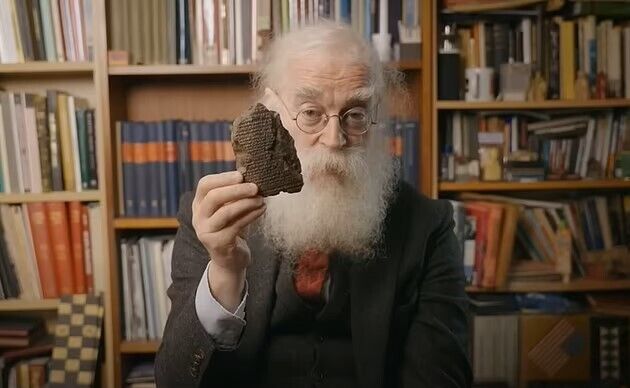News
Archaeologists reveal 3000-year-old secret of the creation of the universe and monsters after deciphering the oldest map of the world
Researchers have finally deciphered the Babylonian tablet, which is considered the oldest map of the world. This allowed them to reveal 3000-year-old secrets about the creation of the universe and monsters.
The Imago Mundi, also called the Babylonian World Map, was discovered in 1882 by the famous archaeologist Hormuzd Rassam in Sippar, an ancient Babylonian city in what is now Iraq. Created between 2600 and 2900 years ago, the tablet provided researchers with a unique insight into the beliefs and practices of the ancient civilization, DailyMail reports.
According to researchers, the Babylonian tablet has a round map with fragments of text about the early creation of the world. The information is written in cuneiform, an ancient writing system that used wedge-shaped symbols.
The map also depicts Mesopotamia, or the land "between the rivers," a historical region of the Middle East that was considered the "known world" at the time.
The plaque also refers to the belief in a powerful God and mythical creatures and monsters, such as the scorpion man and Anzu, a bird with a lion's head.
Scholars say that the Imago Mundi was created at a time when the Babylonian Empire was a world leader in architecture, culture, mathematics, and early scientific achievements. The Babylonians were also the creators of an advanced number system for mathematics and were the first to create a functional theory of the planets, including the use of geometry to track Jupiter.
The map was first discovered in 1882 by the archaeologist Hormuzd Rassam in what is now Iraq. However, since then, the map has remained in a box for almost 150 years.
It wasn't until Imago Mundi acquired the British Museum in London that scholars there realized they had gained insight into the New Babylonian Empire's belief in mystical beings and its dominance in the region.
Mesopotamia is located at the bottom center of the map, but according to British scientists, the two circles surrounding the city are particularly unique. "The double ring is very important because it has a cuneiform inscription that says 'bitter river'. It was believed that this water surrounded the known world," said Dr. Irving Finkel, an expert at the British Museum.
The researchers confirmed that there was another river, the Euphrates, that cut through ancient Mesopotamia from north to south, connecting the Bitter River on the tablet. "This is a very important ring of water because it meant that the Babylonians had an idea of the boundaries of the world where they lived around the sixth century," Finkel said.
Scholars emphasize that there is more to the map than just the location of the regions of Mesopotamia-the triangles on the right edge of the tablet were a place of magic and mystery for the Babylonians. Some researchers have suggested that the triangles are islands, but Finkel believes that they are "almost certainly mountains."
The cuneiform text refers to this area as a place "where the sun is not seen," meaning that the mountains have blocked it from view.
Part of the cuneiform text also alludes to the Babylonians' belief that mythical creatures, including a winged horse, a sea serpent, a scorpion man, and a bull man, lived in different regions around the Earth.
Because the tablet is fragmented in places, the full text could not be deciphered. However, the British Museum reported that it refers to "destroyed cities watched over by Marduk." According to Mesopotamian mythology, Marduk was the god of creation and the patron god of Babylon, who was also revered as a god of justice, compassion, healing, and magic.
Finkel said that the ancient Babylonian map "has given us a remarkable insight into many aspects of Mesopotamian thinking."
"It's also a triumphant demonstration of what happens when you have a very small, completely uninformative piece of deadly boring text that no one can understand. But you attach it to something in the collection that is much bigger and completely new. And the adventure starts all over again," emphasized Dr. Irving Finkel.
Only verified information is available on the OBOZ.UA Telegram channel and Viber. Do not fall for fakes!































